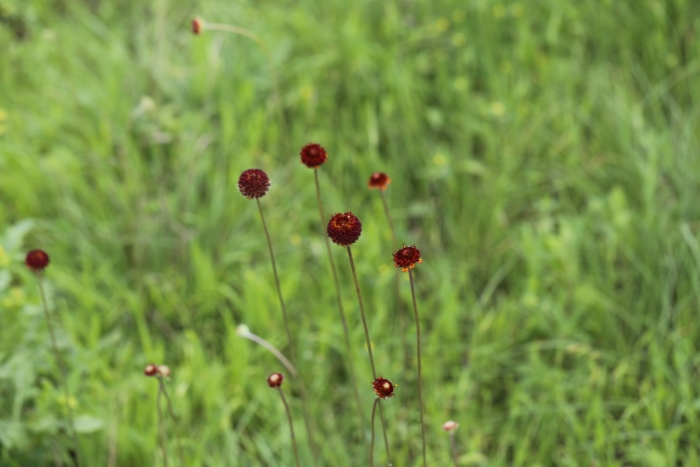Perfumeballs
(Gaillardia suavis)
Perfumeballs (Gaillardia suavis)
/
/

Nick Loveland
Public Domain
Image By:
Nick Loveland
Recorded By:
Copyright:
Public Domain
Copyright Notice:
Photo by: Nick Loveland | License Type: Public Domain | License URL: http://creativecommons.org/publicdomain/zero/1.0/ | Rights Holder: Nick Loveland | Publisher: iNaturalist | Date Created: 2020-04-09T15:38:03-07:00 |


















































Estimated Native Range
Summary
Gaillardia suavis, commonly known as Perfumeballs, is a perennial herb that can be either evergreen or deciduous, depending on the climate. It is native to the prairies, grasslands, and scrublands of the Mexico and the South Central United States, particularly Texas and Oklahoma. This plant typically grows to a height of up to 80 cm (31 in) with a basal rosette of leaves. The flower stalks can reach up to 75 cm (30 in) in length, each bearing a single flower head. The heads usually feature 7-10 red or purple ray flowers, although some may lack ray flowers entirely. The center contains 40-100 pink or purple disc flowers, blooming from late spring to early fall. The flowers are moderately showy and attract pollinators such as bees and butterflies.
Perfumeballs are valued for their drought tolerance and long blooming period, making them suitable for xeriscaping and naturalistic plantings. They are often used in wildflower gardens, borders, and as cut flowers due to their unique appearance. In cultivation, they thrive in full sun to part shade and require low to medium amounts of water, preferring well-drained soils. While generally low-maintenance, they can suffer from root rot if overwatered or planted in poorly drained soils. Deadheading spent flowers can encourage continued blooming.CC BY-SA 4.0
Perfumeballs are valued for their drought tolerance and long blooming period, making them suitable for xeriscaping and naturalistic plantings. They are often used in wildflower gardens, borders, and as cut flowers due to their unique appearance. In cultivation, they thrive in full sun to part shade and require low to medium amounts of water, preferring well-drained soils. While generally low-maintenance, they can suffer from root rot if overwatered or planted in poorly drained soils. Deadheading spent flowers can encourage continued blooming.CC BY-SA 4.0
Plant Description
- Plant Type: Herb
- Height: 1.5-2.5 feet
- Width: 0.48-0.8 feet
- Growth Rate: Moderate
- Flower Color: Red, Yellow, Orange
- Flowering Season: Spring
- Leaf Retention: Deciduous
Growth Requirements
- Sun: Full Sun
- Water: Low
- Drainage: Fast
Common Uses
Bee Garden, Bird Garden, Butterfly Garden, Deer Resistant, Drought Tolerant, Hummingbird Garden, Low Maintenance, Rabbit Resistant, Showy Flowers
Natural Habitat
native to the prairies, grasslands, and scrublands of the Mexico and the South Central United States, particularly Texas and Oklahoma
Other Names
Common Names: Pincushion Daisy
Scientific Names: , Gaillardia suavis, Gaillardia simplex, Gaillardia trinervata, Agassizia suavis, Gaillardia odorata, Gaillardia tuberculata,
GBIF Accepted Name: Gaillardia suavis (Gray & Engelm.) Britton & Rusby